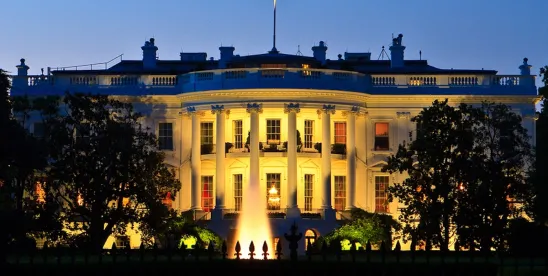On April 8, President Donald Trump issued a series of orders and a proclamation (collectively the “orders”) intended to revitalize US coal production and the industrial use of coal, including for power generation. Among them was an Executive Order on “Strengthening the Reliability and Security of the United States Electric Grid”[1] directing the Secretary of Energy to take a series of steps intended to enhance electric grid reliability and security.
The order states “It is the policy of the United States to ensure the reliability, resilience, and security of the electric power grid,” and that the “electric grid must utilize all available power generation resources, particularly those secure, redundant fuel supplies that are capable of extended operations” to assure adequate generation, meet growing demand, and address the national energy emergency declared on January 20.[2]
Its directives to the Secretary include the following:
- “[T]o the maximum extent permitted by law, streamline, systematize, and expedite the Department of Energy’s processes for issuing orders under section 202(c) of the Federal Power Act” during periods when a grid operator “forecasts a temporary interruption of electric supply.” FPA section 202(c) authorizes the Secretary, whenever he determines that an emergency exists “by reason of a sudden increase in the demand for electric energy, or a shortage of electric energy or of facilities for the generation or transmission of electric energy, or of fuel or water for generating facilities, or other causes . . . to require by order such temporary connections of facilities and such generation, delivery, interchange, or transmission of electric energy as in its judgment will best meet the emergency and serve the public interest.” It has been used sparingly during its history and almost always in response to requests by utilities or states to address short-term emergency conditions. Section 202(c) was substantially amended by Congress in 2015, ostensibly to provide liability protection for entities ordered to operate, but those changes also made use of the authority more cumbersome.
- Within 30 days of the Executive Order, “develop a uniform methodology for analyzing current and anticipated reserve margins for all regions of the bulk power system regulated by the Federal Energy Regulatory Commission,” and upon doing so, “identify current and anticipated regions with reserve margins below acceptable thresholds.”
- “[E]stablish a process by which the methodology . . . and any analysis and results it produces, are assessed on a regular basis, and a protocol to identify which generation resources within a region are critical to system reliability.” The protocol must include all mechanisms available to retain generation identified as critical.
- “[P]revent, as the Secretary of Energy deems appropriate and consistent with applicable law, including section 202 of the Federal Power Act, an identified generation resource in excess of 50 megawatts of nameplate capacity from leaving the bulk-power system or converting the source of fuel of such generation resource if such conversion would result in a net reduction in accredited generating capacity,” as determined under the reserve margin methodology developed as a result of the Order.
To date, the Department of Energy (DOE) has not issued a public notice regarding revisions to its FPA section 202(c) procedures or the development of a uniform reserve margin methodology. DOE’s existing emergency authorities web page has also not been updated. Trade press reports indicate that the North American Electricity Reliability Corporation (NERC) staff is in contact with DOE regarding the new methodology. However, it is unclear to what extent DOE will consider industry input on the new methodology by the 30-day or 90-day deadlines.
By its terms, the Executive Order applies to coal-fired generation and was issued alongside other orders that focused exclusively on promoting coal and coal-fired generation. However, other resource types seemingly could be subject to it.
The Executive Order raises various legal questions, several of which might be tested in litigation. These include:
- Whether the Secretary’s authority under FPA section 202(c) is broad enough to support the actions envisioned by the Executive Order or whether section 202(c) may be used only for temporary emergencies when supply is, or is in imminent danger of being, insufficient to meet demand.[4]
- Whether DOE has legal authority to prohibit resources from retiring or from changing their fuel source for indefinite periods.
- Whether the Executive Order is in conflict with the overall structure of the FPA, which generally reserves regulatory authority over electric generation to the States.
Whether there will be legal conflicts between DOE’s reserve margin methodology and NERC and Federal Energy Regulatory Commission [FERC]-approved resource adequacy, capacity accreditation, and “reliability must run” rules.
[1] Executive Order No. 14262, 90 FR 15521 (April 14, 2025).
[2] “Declaring a National Energy Emergency,” Executive Order No. 14156, 90 FR 8433 (Jan. 29, 2025).
[3] Robb: NERC Working with DOE on Energy Orders, RTO Insider (April 15, 2025).
[4] In Richmond Power & Light v. FERC, 574 F.2d 610, 617 (D.C. Cir. 1977), the court suggested that section 202(c) “speaks of ‘temporary emergencies,’ epitomized by wartime disturbances, and is aimed at situations in which demand for electricity exceeds supply and not at those in which supply is adequate[.]”





 />i
/>i

